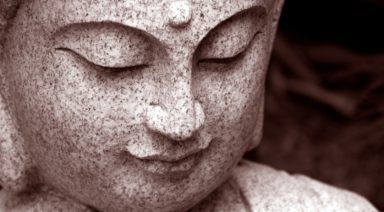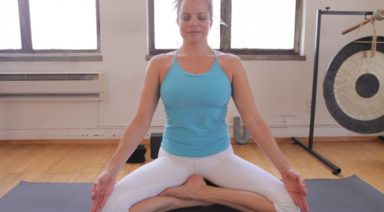Why Tantric Yoga Soul Gazing is Your New Favorite Practice

Communication occurs on many levels beyond talking and listening. Magic happens when the energy lines between people open. Soul gazing is a tantric technique that gives practitioners an altered state of consciousness by staring into another person’s eyes for ten minutes.
“Like iron filings being drawn to a powerful magnetic source, we experience ourselves as being ineluctably drawn closer to a shared feeling of union, relatedness and love. Where formerly we were two separate beings, we join together through the practice and become something that neither of us could quite be on our own.”
~ Johnson, “The Spiritual Practices of Rumi”
What is Tantra Yoga?
The Tantric practice aims to expand beyond perceived limitations of yogic philosophy and the asanas. When one meditates it is the space between thoughts where one begins to find a glimpse of inner peace. As yogis, we cultivate that space until the thoughts become less and less obtrusive, and the space between them becomes vast.
The exploration of the subtle energies within the body and their connection to the universe provide the opportunity to understand the purpose of life and the principles of union in new dimensions.
Try a Soul Gazing Excersize With a Partner
- Settle into a loose, cross-legged position (typically the larger person in Sukhasana first). Your partner then sits on your thighs and crosses their ankles behind your back.
- Touch your third eye centers (space between the eyebrows) as you both lengthen through your spines. Gaze lightly into each other’s eyes as you inhale and exhale through the nose.
- Place your palm on your partner’s heart center and have them place their palm over yours.
- Together, take five breaths, allowing a natural synchronicity of breath to emerge.
- Begin gazing into each other’s eyes. It may seem uncomfortable at first, but persist.
- Surrender to the intimate experience of both your and your partner’s heartbeat. Try this for 10 minutes.
Expand Your Capacity for Intimacy
If you’re practicing Tantra Yoga on your own or with a partner, you’re expanding your capacity for intimacy and union. With practice, we’re able to get up close and intimate with the beliefs and behaviors that hold us back from the intimacy we desire. In addition, Tantric techniques are provided to evolve beyond these barriers so that each and every one of us may thrive and prosper.
Why Does Your Mala Necklace Have 108 Beads?

From the yoga studio to a night on the town, people are donning mala bead necklaces around the globe. However, this trend is steeped in meaningful tradition and symbolism. Each mala necklace has 108 beads, and each bead evokes an energetic frequency based on its material, whether stone or seed.
What is the Significance of 108?
The number 108 has a range of significance across many different cultures and disciplines. For example, this number informs the architecture of sacred texts that are central to yoga and eastern philosophy. As a devoted scholar of yoga and tantra, Shiva Rea explains in Tending the Heart Fire, “there are 108 chapters of the Rig Veda, 108 Upanishads and 108 primary Tantras.” And these texts are written in Sanskrit, a language comprising 54 letters, each with a masculine (Shiva) and feminine (Shakti) form, 54 x 2 = 108. Listed below are just a few of the many relationships that carry this number.
Ayurveda and Other Religions
In in the field of Ayurveda, there are 108 sacred places, or marmas, in the body, identifying intersections of matter and consciousness. When manipulated, these points can awaken and align the vital energy. Members of the Vedic tradition see this number as denoting the wholeness of the universe: one represents the solar masculine, zero represents the lunar feminine and eight represents the infinite nature of all things. In the classic japa mala, used in Buddhism and Hinduism, there are 108 beads used for prayer and mantra.
Mathematics and Astronomy
Mathematicians favor the number 108 for its countless patterns and potential divisions. For example, it is divisible by the sum of its parts and most of its proper divisors, making it a semi-perfect number. Through the lens of astronomy, the diameter of the sun is approximately 108 times that of earth and the distance from our planet to its solar star is, on average, 108 times the diameter of the sun. A similar parallel relationship also exists between the earth and the moon.

What is a Mala?
A mala, meaning garland in Sanskrit, evokes a circular, continuous form. In practice, a mala is the devoted offering of repeated cycles (typically in divisors of 108) of mantra japa or yoga asana. Within a mala, there is always a sense of beginning, continuing and completion. Both inside each individual cycle and in the practice as a whole. This three-form (trimurti) quality allows us to embody, in practice, the rhythmic cycles ever-present in the natural universe: creation (srishti), sustaining (sthiti) and destruction (samhara).




































